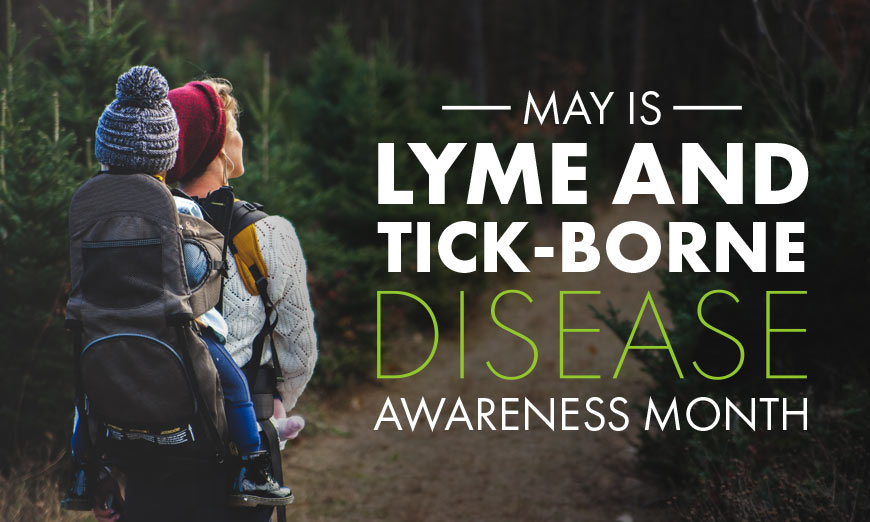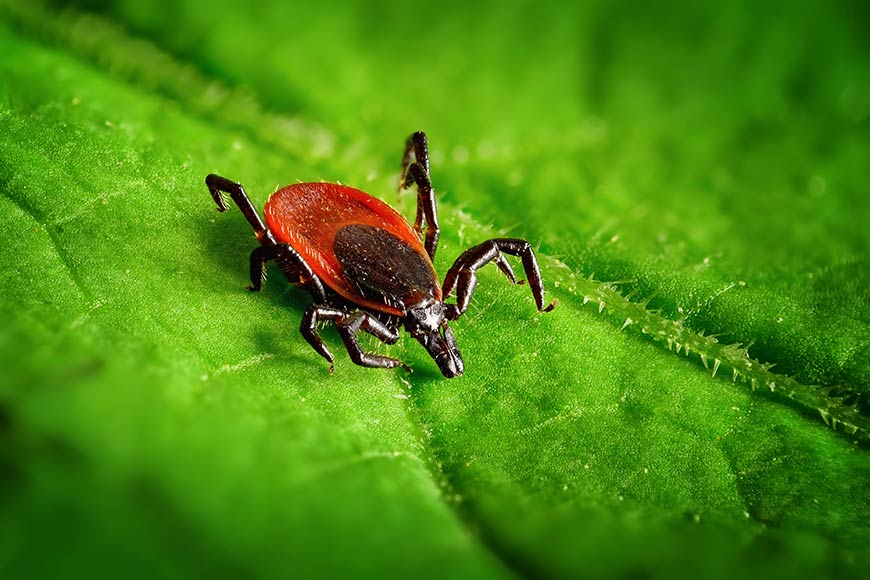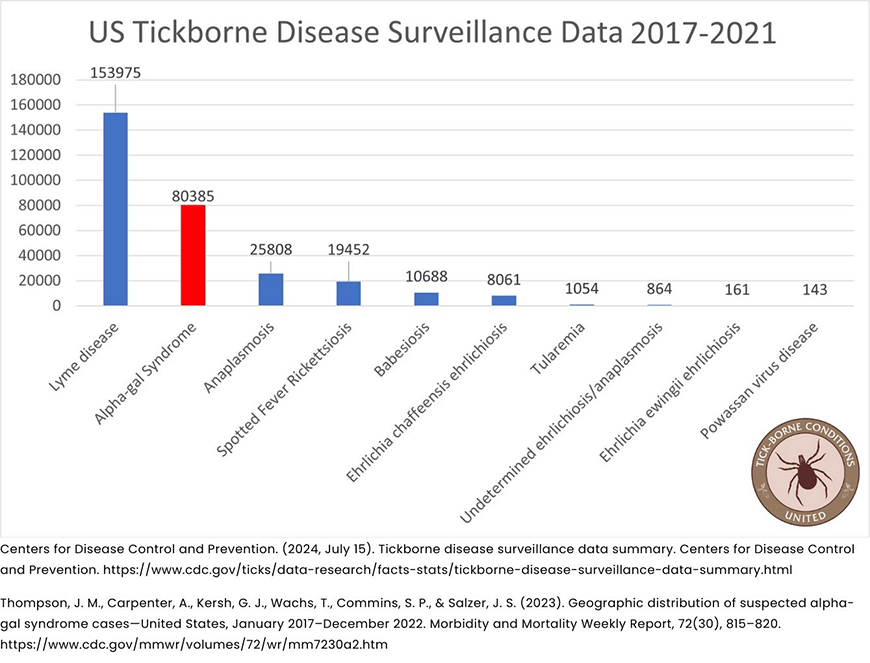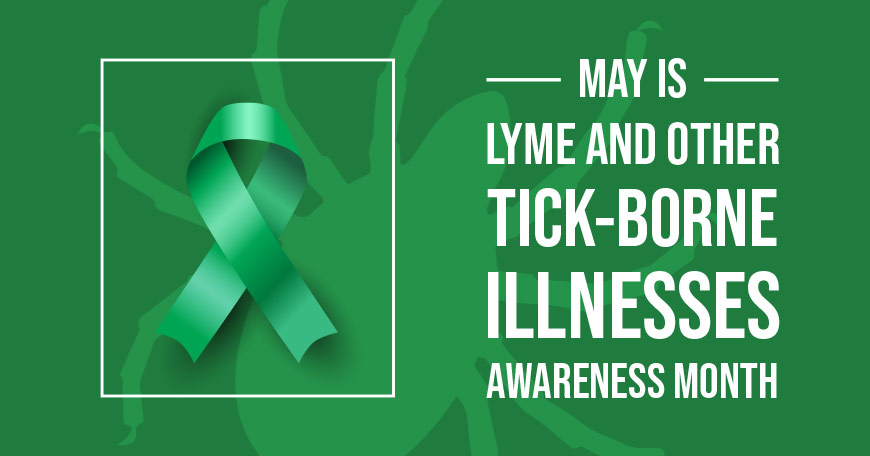Alpha-gal Information
Share Your Experience With Tick-Borne Illnesses
We want to Hear from You! Have you been diagnosed…
May is Lyme & Tick-Borne Disease Awareness Month – Let’s Talk Ticks
Dear Friends, May is Lyme and Tick-Borne Disease Awareness Month…
Blacklegged Ticks in the U.S. Confirmed in New CDC Cases of Alpha-gal Syndrome – the Potential “Missing Link” for Lyme Disease Patients?
TBC United Responds with Urgent Call to Expand Research and…
Alpha-Gal By The Numbers: A Comparison Of Lyme, AGS, And Other Tick-Borne Disease Cases From 2017-2021
U.S. tick-borne disease surveillance data from 2017-2021 Unlike Lyme and…
Bridging the Gap: Alpha-gal Awareness Takes Center Stage at Bi-State Conference
On November 8, TBCU Chair Dr. Tina Merritt, along with…
Spring into TBD education, research, and advocacy!
Help us celebrate Lyme and Tick-borne Disease Awareness Month. Join…
What is Alpha-gal?
- Alpha-gal (galactose-α-1,3-galactose) is a sugar molecule found in most mammals (except in humans and Old World apes).
- Alpha-gal is found in “red meat” such as beef, lamb, pork, venison, rabbit, squirrel. It is not found in fish, reptiles, or birds.
- Alpha-gal can be found in products that contain mammal ingredients (including some medications, cosmetics, vaccines, gelatin, and milk products).
Alpha-gal has been found in some types of ticks, including the Lone star tick (Amblyomma americanum) and the Blacklegged tick (Ixodes scapularis) in the U.S.
What is Alpha-gal Syndrome?
Alpha-gal Syndrome (AGS), also referred to as alpha-gal allergy, is an allergic reaction to the alpha-gal sugar molecule. Reactions typically occur between zero and 10 hours after people eat meat from mammals that have alpha-gal or are exposed to products made from mammals, including some medications, cosmetics, vaccines, gelatin, and milk products.
What are the Symptoms of Alpha-gal Syndrome*?
Many Alpha-gal researchers are now finding that “Alpha-gal breaks all the rules.” To diagnose and treat Alpha-gal Syndrome, healthcare providers must ignore much of their immunology training, including how allergies occur, how they are triggered, and who gets affected. Because so little is understood about Alpha-gal Syndrome (alpha-gal allergy), patients have often been told it is “in their head” and that their symptoms are not relevant to their condition.
Key factors to remember:
- Symptoms of Alpha-gal Syndrome commonly appear between zero and ten hours after exposure from eating meat (e.g., beef, lamb, pork, venison, and rabbit) or exposure to products containing alpha-gal (such as medications, cosmetics, vaccines, gelatin, and milk products). Exposure routes include eating, skin contact, or inhalation.
- Symptoms are variable and wide-ranging. Examples include:
- hives (urticaria);
- anaphylaxis (a potentially deadly reaction that restricts breathing);
- angioedema (similar to hives, but at deeper layers of the skin);
- gastrointestinal (e.g. diarrhea, acid reflux, upset stomach, vomiting)
- rapid decrease in blood pressure;
- swelling of the lips, face, tongue and throat, or other body parts; and
- atypical chest symptoms.
- Symptoms may not occur after every exposure and can vary from person to person.
- Symptoms may not get progressively “worse” over time. A person can have an anaphylactic reaction one time, and the next time: diarrhea, itching, or a burning sensation.
- *Alpha-gal Syndrome has many names and is also known as AGS, alpha-gal allergy, red meat allergy, mammalian meat allergy, and mammalian products allergy.
Who is at Risk for Developing Alpha-gal Syndrome?
- People considered most at risk are those who live in areas where they are subject to exposure to ticks. The strongest known association is with the Lone star tick (Amblyomma americanum).
- Many states in the U.S. are known to have Alpha-gal Syndrome “hotspots” including Arkansas, Georgia, Kentucky, Long Island New York, North Carolina, Tennessee, and Virginia. However, cases are increasing throughout the eastern United States.
Can you get Alpha-gal Syndrome from a tick bite?
- Data from the United States and other countries show a strong association between Alpha-gal Syndrome and tick bites. Emerging research in the U.S. now shows that the Lone Star tick can cause the alpha-gal sensitivity in mice (see Resources below).
Associated ticks in the United States:
- In the U.S., the Lone star tick (Amblyomma americanum) is most commonly associated with Alpha-gal Syndrome (alpha-gal allergy).
- Alpha-gal has been isolated in the saliva of the Blacklegged tick (Ixodes scapularis).
- Alpha-gal has been isolated in the saliva of Asian longhorned ticks found in Japan. To date, no known association exists between Asian longhorned ticks and Alpha-gal Syndrome in the U.S.
Bites from other types of ticks are associated with Alpha-gal Syndrome in Australia, Asia, and Europe.
When Should You See a Doctor?
If you suspect that you, or someone you know, may have Alpha-gal Syndrome (or alpha-gal allergy), avoid exposure to red meat until you can see a healthcare provider. If you have a severe reaction, seek emergency help.
Because so little is understood about Alpha-gal Syndrome, try to find a healthcare provider in your area who is familiar with the condition and who has worked with other Alpha-gal patients.
Doctors should diagnose Alpha-gal Syndrome using a combination of your personal history (such as exposure to ticks and symptoms) and a blood test that looks for IgE antibodies to alpha-gal (see below).
IF YOU DEVELOP SIGNS OF ANAPHYLAXIS, seek emergency treatment
Signs of anaphylaxis include:
- Difficulty breathing;
- Throat closure;
- Rapid, weak pulse;
- Dizziness or lightheadedness;
- Drooling and inability to swallow;
- Full-body redness and warmth (flushing).
Unexplained anaphylaxis may be a symptom of undiagnosed or misdiagnosed Alpha-gal Syndrome.
WARNING: Anaphylaxis is a life-threatening medical emergency that requires treatment with an epinephrine (adrenaline) injector (EpiPen, Avi-Q, others) and a trip to the emergency room. Seek healthcare guidance immediately. Do not delay treatment.
How Do I Get Tested for Alpha-gal Syndrome?
Doctors can diagnose Alpha-gal Syndrome (alpha-gal allergy) using a combination of your personal history (e.g. exposure to ticks and symptoms) and a blood test that looks for IgE antibodies to Alpha-gal (see below). At this time, the only known lab in the United States that tests for the IgE antibodies is Viracor-Eurofin (through Labcorp, Quest, and other labs). The lab test should not cost more than $79.
Your medical provider would request these tests:
- Quest: Testcode 10554
- Labcorp: Testcode 650001
- Viracor-Eurofin Galactose-alpha-1,3 galactose (Alpha-Gal) IgE
Test Code: 30039; or - Viracor-Eurofin Alpha-Gal Panel
Test Code: 403196P
Tests in this Panel:
Galactose-alpha-1,3 galactose (Alpha-Gal) IgE
Beef (Bos spp) IgE
Pork (Sus spp) IgE
Lamb / Mutton (Ovis spp) IgE
What is the Treatment for Alpha-gal Syndrome?
Alpha-gal Syndrome should be managed under the supervision of a healthcare provider. As with other food allergies, recognition of symptoms and dietary modification — avoiding mammal meat and ingredients wherever possible — are the key to preventing serious and life-threatening health problems.
If you and your healthcare provider determine that you do have Alpha-gal Syndrome (alpha-gal allergy), you must get a prescription for epinephrine injectors (a syringe and needle used to inject a single dose of medication when pressed against the thigh, also know as: Epi-pen or Auvi-Q) and keep it with you at all times in case of emergency.
Other considerations:
Be an Ingredient Detective
Check food labels to make sure they do not contain mammal ingredients. Ingredients can be disguised and difficult to recognize as meat based. Names include: xyzabc.
Restaurants and Eating Out
Practice vigilance when eating out at restaurants and other social occasions. People often do not realize the potential and very real danger of even minute cross-contamination. Avoid foods if there is the slightest risk of mammal ingredients or cross-contamination. Do not hesitate to bring your own food whenever necessary. You must be your strongest advocate.
What is the Cure for Alpha-gal Syndrome?
No known cure exists for Alpha-gal Syndrome. In very rare occasions, people have had their allergic response diminish or disappear over time by avoiding exposure to mammal allergens, and additional tick bites.
In addition, some patients go into remission through treatment with a highly specialized form of ear acupuncture. One such treatment is known as Soliman’s Auricular Allergy Treatment (SAAT). SAAT is a patented ear acupuncture treatment developed by Nader Soliman, a physician in Rockville, Maryland. Researchers are working to develop randomized controlled trials to further review and document results.
How Can I Prevent Alpha-gal Syndrome?
The best way to prevent Alpha-gal Syndrome is to avoid areas of tick-infested habitats. In particular, ticks are found anywhere deer live, run, sleep, and feed. Ticks are also found in wooded, bushy areas. Use the following simple precautions:
For People:
- Use Repellents. Environmental Protection Agency (EPA)-registered insect repellents.
- Cover Up. Wear long, light-colored pants tucked into socks. Long-sleeved, light-colored shirts, a hat, and gloves. Avoid grasses and leaf litter whenever possible.
- Treat Clothing and Gear with repellent such as undecanone, permethrin or buy pre-treated items.
- Perform Daily Tick Checks. Check yourself, your children, and your pets for ticks.
- Dry your clothes on high for 15 minutes after being outdoors in areas known for presence of ticks.
For Pets:
- Use Tick-Prevention. Talk to your veterinarian about recommended products.
- Perform Daily Tick Checks, especially after being outdoors.
- Remove ticks on your pet immediately. Avoid direct contact with your skin.
For Property:
- Tick-proof Your Yard. Clear brush and leaves where ticks live. Keep woodpiles in sunny areas. Use a yard spray to kill and repel ticks.
How Do I Remove a Tick?
- Remove a tick as soon as possible with sharp pointed tweezers.
- Grasp the tick at the point where it is embedded into the skin.
- Don’t squeeze or crush the tick, pull it carefully and steadily.
- Once you’ve removed the entire tick, save it and apply antiseptic to the bite area.
Alpha-gal Information Resources Cited
Learn more about Alpha-gal Syndrome (alpha-gal allergy) by accessing the following resources:
- Watch TBC United’s 1st International Alpha-gal Symposium, May 2018.
- Alpha-gal in Black-legged Tick Saliva: Study Reveals Potential Implications For Lyme Patients. https://tbcunited.org/alpha-gal-in-black-legged-tick-saliva/
- Characterizing the Geographic Distribution of the Alpha-gal Syndrome: Relevance to Lone Star Ticks (Amblyomma americanum) and Rickettsia. Thomas A.E. Platts-Mills, MD, PhD, FAAAAI, Alexander J. Schuyler, BS, BA, Scott P. Commins, MD, PhD, Tina K. Merritt, MD, FAAAAI, Erin E. McGintee, MD, Hayley James, MD, Lisa J. Workman, BA, Jeffrey M. Wilson, MD, PhD. Journal of Allergy and Clinical Immunology, Volume 141, Issue 2, AB147.
- The Mayo Clinic website page Diseases & Conditions: Alpha-gal syndrome:https://www.mayoclinic.org/diseases-conditions/alpha-gal-syndrome/symptoms-causes/syc-20428608. Accessed online August 17, 2019.
- The Relevance Of Tick Bites To The Production Of Ige Antibodies To The Mammalian Oligosaccharide Galactose-α-1,3-galactose. Commins, Scott P. Et Al. Journal Of Allergy And Clinical Immunology, Volume 127, Issue 5, 1286 – 1293. E6.
- TickEncounter https://tickencounter.org/
- Tickborne Infections Council of North Carolina http://tic-nc.org/
- The US Centers for Disease Control and Prevention website page Alpha-gal allergy: https://www.cdc.gov/ticks/alpha-gal/index.html. Accessed online September 11, 2019.
- The US Centers for Disease Control and Prevention website page https://www.cdc.gov/ticks/index.html
Chandrasekhar, Jessica L. , Kelly M. Cox, William M. Loo, Hui Qiao, Kenneth S. Tung and Loren D. Erickson. Cutaneous Exposure to Clinically Relevant Lone Star Ticks Promotes IgE Production and Hypersensitivity through CD4+ T Cell– and MyD88-Dependent Pathways in Mice. J Immunol July 3, 2019, ji1801156; DOI: https://www.jimmunol.org/content/203/4/813. Article link: https://www.jimmunol.org/content/early/2019/07/02/jimmunol.1801156
This material is compiled from multiple respected sources, from TBC United research, and from the experiences of TBC United community members. While we work hard to ensure relevancy and currency, we cannot guarantee the accuracy of all information presented on this or associated (linked) web sites. The content is offered to provide practical and useful information on the subject matters covered. It is being presented with the understanding that TBC United is not engaged in rendering medical or other professional services. If medical or other expert assistance is required, the services of a licensed physician should be sought. If you choose to use preventive products on yourself, your loved ones, or your pets, carefully read and follow your medical professional and manufacturers’ recommendations.
Contact Us

Tell us how we can help.
Please provide your contact info and brief details and we'll respond within one business day, or sooner.






